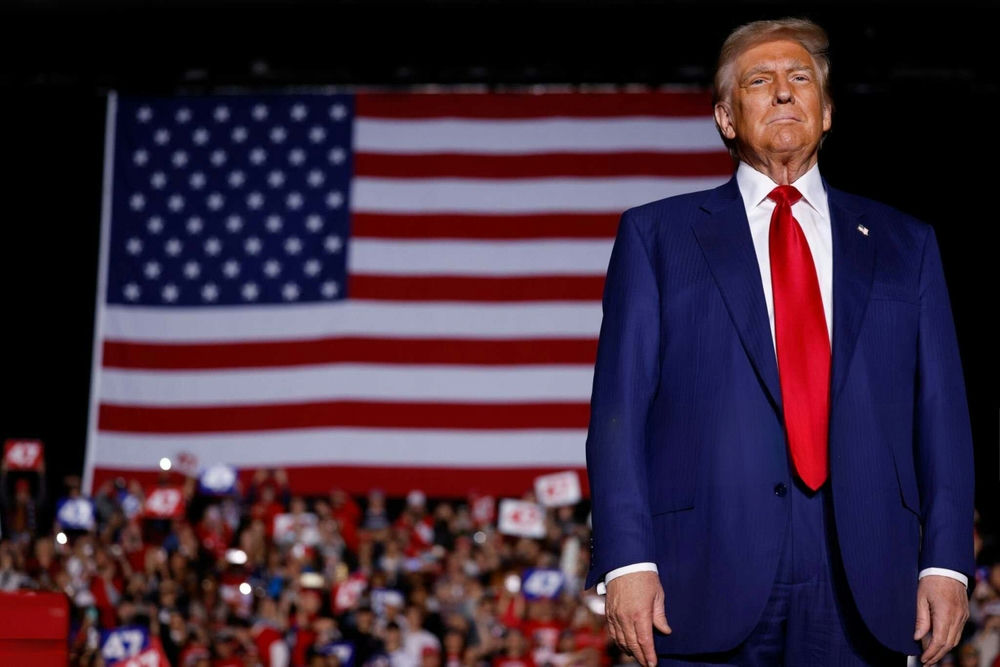President Trump’s latest public scorching of Federal Reserve Chair Jerome Powell is sending shockwaves through Washington and Wall Street, as Trump accuses Powell of being “too angry, too stupid, & too political” after yet another decision to keep interest rates sky high—while Americans keep choking on inflation and government overreach doesn’t let up.
Trump’s Fury: Fed Stubbornness and Rising Costs for Americans
The Federal Reserve, in its fifth consecutive meeting, has decided to keep interest rates locked in at a punishing 4.25%–4.5%, ignoring both the mounting evidence of persistent inflation and the cries of American families and businesses squeezed by higher borrowing costs. Trump’s response? Unfiltered, unapologetic, and long overdue. He’s not mincing words: Powell, he says, is costing this country trillions and is unfit to lead the central bank. Anyone paying attention to their grocery bill, their mortgage, or their retirement account doesn’t need a Harvard degree to know something is broken at the Fed—and it starts at the top.
The latest FOMC vote was 9-2—meaning not one, but two Republican-appointed governors dissented, demanding an immediate rate cut to throw the American economy a lifeline. This kind of internal division hasn’t been seen at the Fed since 1993. Yet, Powell and his majority remain wed to the same “wait-and-see” strategy that left us with the inflation mess in the first place. It’s no wonder Trump is fed up. If Powell’s ego was measured in dollars, we might have already solved the national debt crisis.
Rare Dissent at the Fed Signals Deeper Trouble
The Federal Reserve’s supposed independence is starting to look more like an insulated ivory tower, completely detached from the pain real Americans are feeling. With inflation still running above the Fed’s own 2% target and everyday essentials stretching family budgets to the breaking point, the central bank’s refusal to cut rates is a slap in the face to the working class. Trump’s tariffs were designed to protect American industry, but Powell’s stubbornness is undercutting those gains. The two dissenting governors—Christopher Waller and Michelle Bowman—are advocating for a pro-growth, pro-America approach, and their rare break with Powell is a warning that the status quo can’t last much longer.
President Trump is going scorched earth on Jerome “Too Late” Powell bright and early:
“TOTAL LOSER” pic.twitter.com/TjCpEnS62C
— Benny Johnson (@bennyjohnson) July 31, 2025
Meanwhile, Powell continues to cite “ongoing inflation and tariff impacts” as reasons for caution, ignoring the fact that years of money-printing and government overspending—hallmarks of the previous administration—are what got us into this mess. The Fed’s reluctance to reverse course is now fueling market volatility and keeping families in a state of financial anxiety, all while Washington insiders pat themselves on the back for “stability.” If this is stability, Americans could use a little chaos—of the draining-the-swamp variety.
Political Pressure Mounts: Trump Eyes Fed Shake-Up
Trump’s outrage isn’t just about economic theory—it’s about the real-world consequences of policies that put government technocrats ahead of American citizens. He has made no secret of his intent to replace Powell as soon as the law allows, and it’s clear that the days of the Fed Chair operating with impunity may be numbered. Some in Congress, especially House Republicans, are backing Trump’s push for accountability at the Fed, arguing that the central bank’s failed leadership has held back growth and punished savers and retirees.
Powell, for his part, is digging in, defending the Fed’s “independence” and “data-driven” approach. But how independent can an institution be when it routinely ignores the voices of its own governors and the American people? The political implications are enormous: if Trump replaces Powell in 2026, expect a Fed that finally puts Main Street before Wall Street and takes its marching orders from the ballot box, not the back rooms of the D.C. elite.
Impacts on Markets and Everyday Americans
The ongoing standoff between Trump and Powell is more than a personality clash—it’s a battle over the future of economic policy in America. In the short term, markets are jittery, with investors unsure if and when relief will come. For borrowers and businesses, every month of high rates means higher costs, delayed investment, and fewer jobs. For savers and retirees, the uncertainty undermines confidence in both the Fed and the dollar itself.
Reporter: Do you ever feel sorry for Jerome Powell when Trump criticizes him?
Me: "No, I don’t feel sorry for Jerome Powell. He’s worth over $200 million. Who I feel sorry for are the Americans who can’t get a mortgage because Powell refuses to lower interest rates from 20-year… pic.twitter.com/h5NJ5IAO7T
— James Fishback (@j_fishback) July 31, 2025
Long-term, the precedent being set now could reshape how the Fed operates for a generation. If the central bank continues to ignore the needs of the people in favor of bureaucratic inertia, Trump’s willingness to call out the absurdity may be the only thing standing between the American middle class and permanent financial decline. The next FOMC meeting is in September, but one thing is already clear: the days of the Fed Chair acting as an unelected monarch are coming to an end, and not a moment too soon.
Sources:
Fox Business: Federal Reserve Interest Rate Decision July 2025
CBS News: Federal Reserve Meeting Today
Federal Reserve Official Statement July 30, 2025

